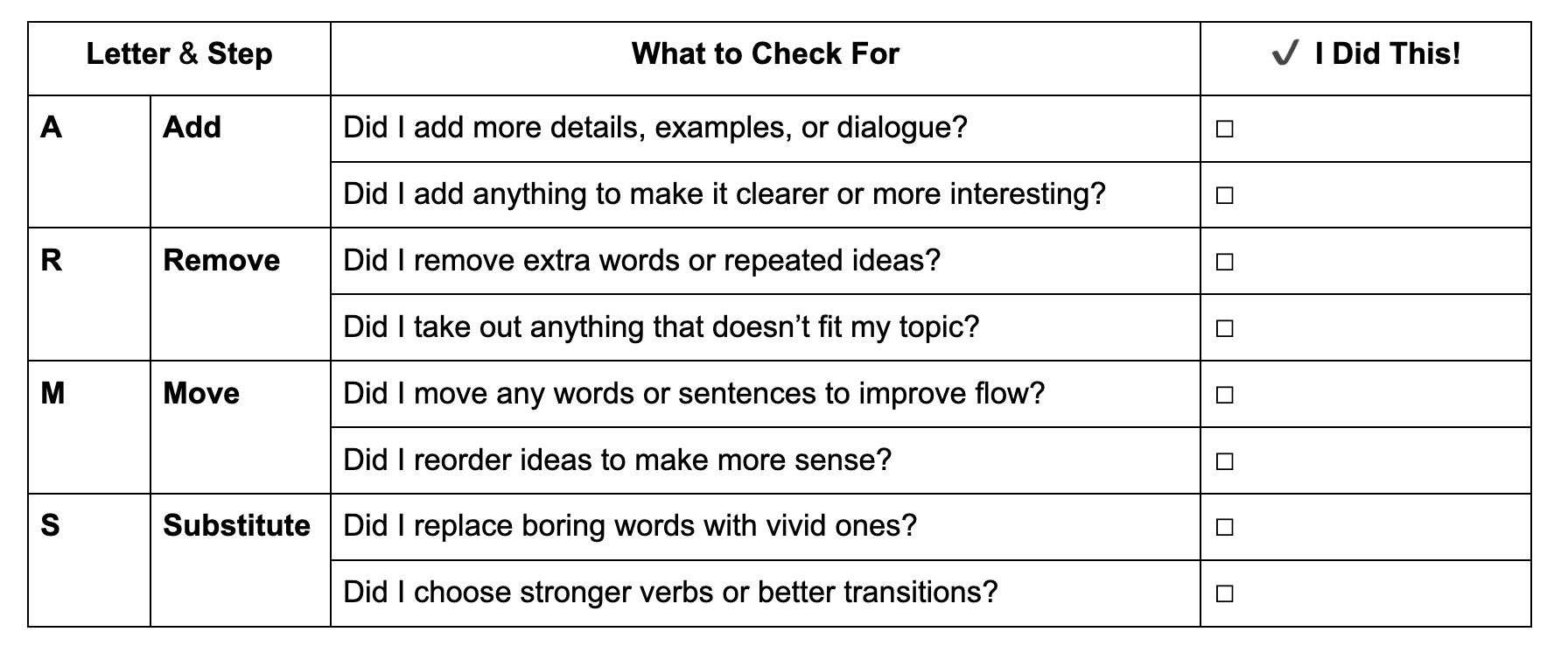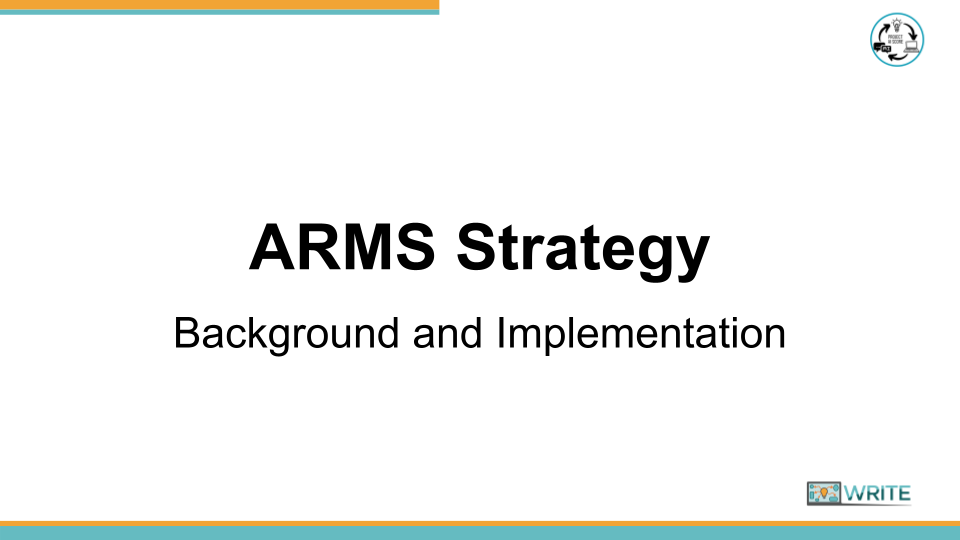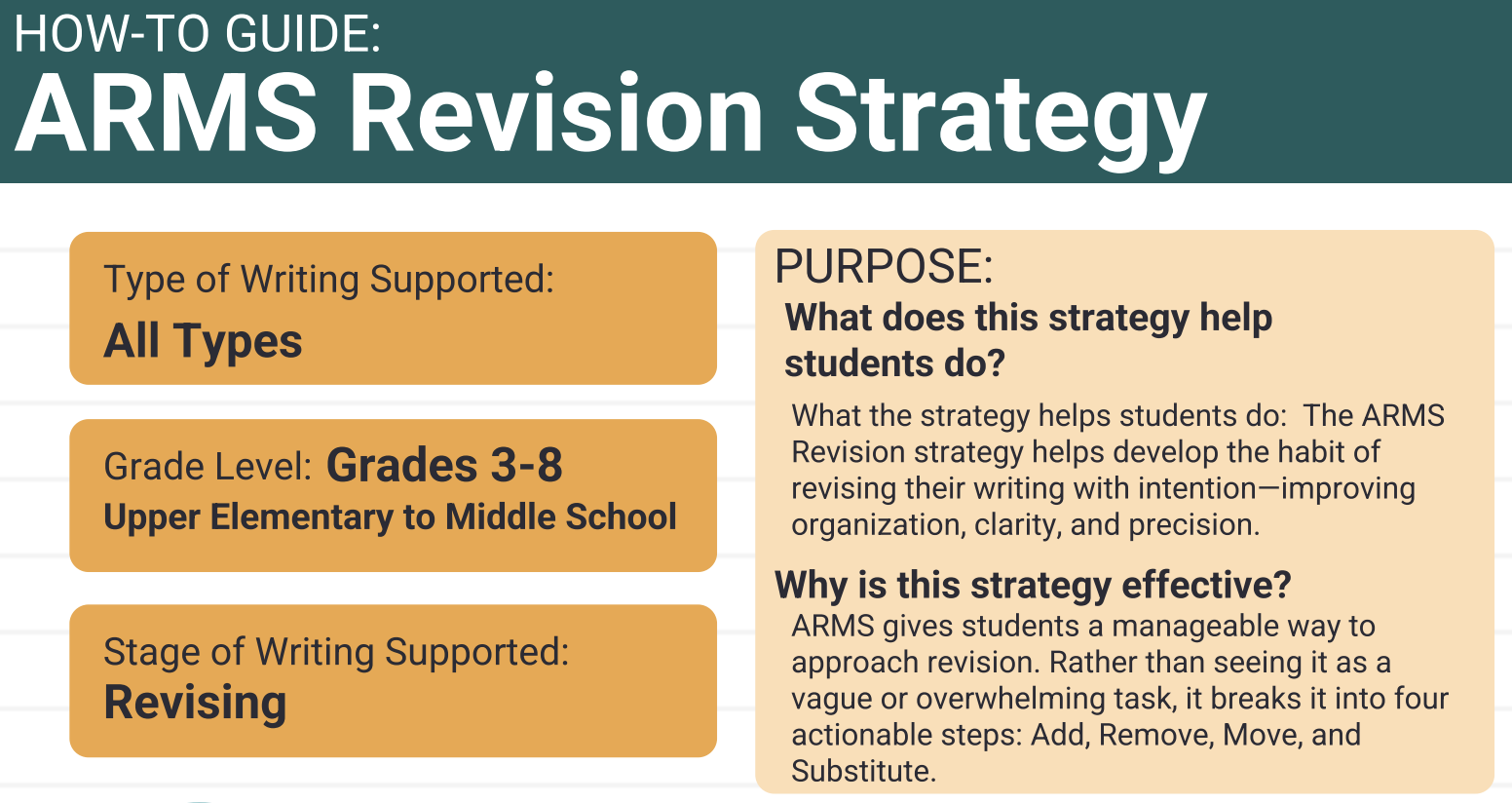Add, Remove, Move, Substitute (ARMS) Strategy
Strategy Parameters
- Genre: All genres (narrative, informative, persuasive).
- Grade Level: Upper elementary to middle school (Grades 3–8).
- Writing Process: Revising.
At-A-Glance
The ARMS (Add, Remove, Move, Substitute) strategy provides students with four concrete, actionable steps to approach the intimidating task of revising their writing. It structures the revision process to focus on organization, clarity, and precision, encouraging students to look beyond surface-level edits. By consistently practicing these four steps, students develop stronger habits for evaluating how each sentence contributes to their overall message, thereby revising their work with greater intention.
Learn More
Best Practices
-
Teach ARMS one step at a time, breaking it into focused mini-lessons (e.g., dedicating a day solely to the “Add” step).
-
Use visuals, metaphors, and color-coding (e.g., the garden analogy, different colored pens for each step) to reinforce the structure.
-
Model each revision step with think-alouds, showing how a sentence changes and why that change improves the writing.
-
Provide sentence stems and word banks to help students substitute weak words and add details with confidence.
-
Connect ARMS to real writing goals (e.g., using “Add” to make a story more exciting or informative) to emphasize the purpose behind the revision.
Common Pitfalls
-
Don’t present all four steps at once without modeling or guided practice, as this can overwhelm students.
-
Don’t rely only on verbal explanations; struggling learners require concrete support like visuals, scaffolding, or body movements.
-
Don’t assume students know what “revise” means; explicitly clarify how it differs from editing.
-
Don’t start with full essays; use short, manageable texts, paragraphs, or even single sentences for initial practice.
-
Don’t treat ARMS as a checklist-only task; help students understand the purpose and intentionality behind each revision choice.
Implementation Tips
-
Introduce and Model: Begin by modeling the ARMS strategy with a short writing sample and a colorful acronym poster, demonstrating live or recorded revisions to show how each action (Add, Remove, Move, Substitute) improves the text. Connect each step to body movements or a metaphor to support kinesthetic learning.
-
Guided Group Practice: Guide students through group practice by collaboratively revising a paragraph or participating in interactive games like the Word Wizard Challenge or ARMS Relay Race. Use “mystery texts” to spark discussion and pair work on applying the ARMS steps.
-
Independent Application: Transition to independent practice using revision journaling or visual checklists that reinforce the ARMS actions. Encourage students to focus on mastering one revision skill at a time during short assignments to build confidence and clarity before tackling larger pieces of writing.




